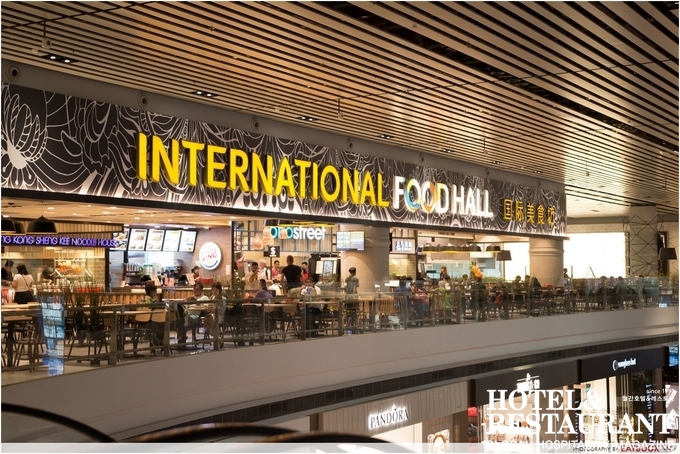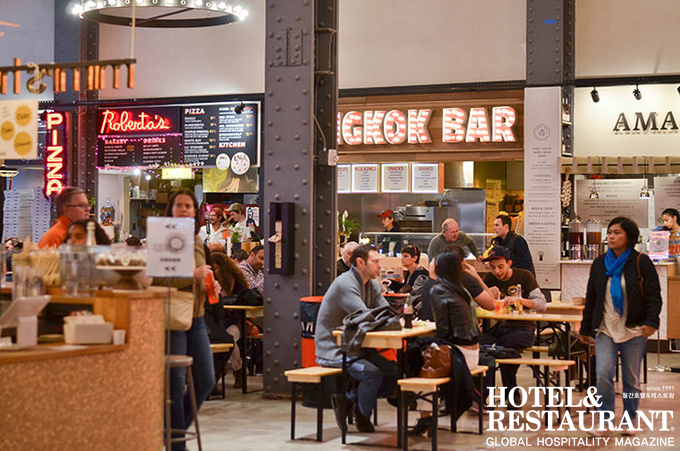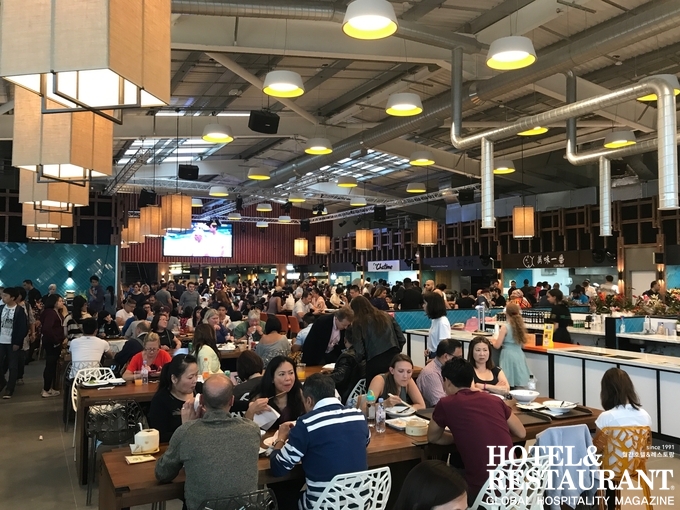
음식 서비스, 소매(상가)부동산시장에 구원자 될까?
지난 5월 이탈리아 밀라노에서 진행된 첫 번째 ‘MAPIC 식음료 컨퍼런스’에 참여할 기회가 있었다. 잘 모르고 있을 이들을 위해 설명하자면 MAPIC은 전문적이고 전 세계적인 전시회 및 박람회 기업 Reed MIDEM에서 주최하는 국제 소매업 컨퍼런스로 전 세계에서 진행되지만 가장 큰 행사는 매년 11월에 프랑스 칸에서 열린다. 기존의 이력을 살펴보면 대부분의 전시자는 부동산 투자가나 개발자, 그리고 라이프스타일 소매업체들로 이뤄져 있고, 행사의 주된 목적은 소매부동산 개발을 촉진하는 것이다.
하지만 모두가 알고 있다 시피 세계는 전자상거래의 급성장으로 인해 빠르게 변화하고 있다. 때문에 전통적인 소매부동산 모델은 더 이상 적용할 수 없는데다가 변화에 적응하는 속도도 더디다. 음식의 경우 쇼핑과 스트립 몰에서는 전 세계적으로 저평가돼 왔지만 부동산에서는 중국과 같은 나라에서 음식 서비스 과다공급으로 인해 부정적인 판매실적을 보이는 과잉반응을 일으키기도 했다. 음식 서비스는 대체적으로 신중히 고려되지 않았고 건물주들은 한 시설에 디저트 상점이 20곳이 들어와 있어도 관계없이 빈 공간을 채우기를 희망한다.
이러한 흐름에서 밀라노에서 개최된 이 회의는 소매부동산 업계 내에서 식품의 미래 전략적 역할에 대해 공식적인 대화를 시도한 최초라고 볼 수 있다. 다음은 내가 컨퍼런스에서 얻은 인상이다.
•아직까지는 아무도 정확한 소매부동산 모델을 발견하지 못했다. 어느 정도의 식음료 매장이 몰이 기타 상업용 부동산 개발에 필요한가? 공간을 채우고 고객을 끌어들일 만큼 흥미롭고 혁신적인 음식 서비스가 충분한가? 아직까지 확답은 내리지 못하겠다.
•푸드 홀(Food Hall)은 중요한 해결책이 될 것이다. 이미 전 세계에는 많은 푸드 홀들이 운영되고 있으며 운영자들은 사람들의 발길을 끌을 만한 세입자 조합을 찾는데 상당한 에너지를 소비하고 있다. 영국 런던에 있는 Harrod's Knightsbridge, 시애틀의 Pike's Market, 일본 신주쿠 이세탄백화점의 지하 푸드 홀 등 대표적인 푸드 홀들을 살펴보면 요즘의 푸드 홀은 대체로 도시 현상에서 비롯됐다고 할 수 있다. 각 푸드 홀은 베이커리, 신선 농산물, 가공식품, 고급 제과 및 레스토랑을 들여놓았다. 미국의 푸드 코트의 경우에는 점차 사람들의 발길을 이끌지 못하고 보다 고퀄리티의 음식 서비스로 대체될 것이다. 그렇다면 그러한 브랜드는 어디서 찾을 수 있는가? 아직 해답을 얻지는 못했지만 아마 시장의 요구가 해결책을 이끌어내 줄 것이다.

•어느 한 나라를 꼬집기는 힘들지만 특히 이탈리아에서는 혁신이 부족한 듯 보인다. 비슷한 종류의 피자와 파스타를 파는 가게들이 많아 이탈리아에서 온 전시자의 대부분이 고루한 아이디어를 선보였다. 그러나 이탈리아에는 토리노의 매우 혁신적인 음식 체험으로 잘 알려진 ‘Eataly’가 있다. Eataly의 개념은 전 세계적으로 급속도로 성장하고 있고 훌륭한 고객 경험을 제공할 뿐만 아니라 이탈리아 음식에 대해 배우기도 매우 좋은 곳이다. Eataly에 가서 요리수업을 들어보자. 프로슈토를 어떻게 만드는지 배우고 자신만의 파스타와 피자 레시피를 개발해보자. 밀가루, 파스타, 올리브오일과 같은 제조 제품을 구매하고 근사한 레스토랑에서 훌륭한 식사를 하자. 이 모든 것이 Eataly에서 가능하다. 나는 20세기 역사를 자랑하는 볼로냐 외곽의 FICO의 Eataly를 방문했다. 그 곳에서 맛보는 음식들은 이탈리아의 전통이 고스란히 담긴 유산이며 FICO에 갔다면 이 음식아 가상 디즈니랜드를 놓쳐서는 안 되겠다.
•Harrod's, Isetan, Eataly, Selfridges 등 이미 푸드 홀을 잘 운영하고 있는 회사는 다른 부동산 개발업자에게 자신의 모델을 라이센싱하는 과정에서 호재를 누릴 수 있다고 생각한다.
•음식 자체가 소매부동산 산업의 구원자는 아니지만 솔루션의 큰 부분을 차지할 수 있다. 식음료뿐만 아니라 개발자는 트램펄린 공원, 클라이밍 벽, 스크린 골프 등 훌륭한 경험을 할 수 있는 다른 아이디어에도 집중해야 한다. 각 시장마다 갖출 수 있는 고유한 솔루션을 찾아야 한다. 누구나 두바이의 에미리트 몰에 스키슬로프를 설치할 수 있는 것은 아니다.
•이미 도시 중심의 많은 아시아 소매 개발자들이 앞서가고 있다. 방콕에 있는 시암 파라곤이 좋은 예다. 서울에 있는 코엑스 현대백화점도 그렇다. 잘되고 있다고는 하지만 패션과 라이프스타일 브랜드의 임대 수입 감소를 막는데 충분하지 않을 수는 있다.
필리핀과 베트남 같은 많은 개발도상국에서 주요 쟁점으로 삼고 있는 것은 가계소득과 어떻게 하면 합리적으로 좋은 음식경험을 만들어 낼 수 있냐는 것이다. 호치민에 있는 사이공 센터 내의 37번가가 음식점과 노점상을 적절히 조합한 첫 사례라고 볼 수 있다.
그렇다면 한국은 어떠한가? 한국 개발자들도 마찬가지로 글로벌 트렌드의 영향을 받지 않을 수가 없다. 이미 일본은 백화점 지하에서 훌륭한 음식을 제공하고 있지만 쇼핑몰의 경우에는 보다 혁신이 필요하다. 한국의 경우 주의 깊게 생각해봐야 할 것은 한국인의 제한된 입맛이다. 한국인이 받아들일만한 세계 음식들을 다양하게 모아놓는다는 것은 쉽지 않은 일이다. 고추와 마늘에 익숙해져 있는 한국인 입맛은 다른 로컬음식을 받아들이는데 영향을 줄 수 있으며 전반적으로 지역 식음료 분야에 대해 혁신이 필요하다. 내가 생각했을 때는 Eataly와 Harrods가 올바른 해결책이라고 생각한다. 한국의 개발자들은 이러한 해결책들을 잘 벤치마킹해 지역의 식음료사업과 협력해 스스로 해결으로 나가야 할 것이다.

I had the privilege to attend the first MAPIC Food & Beverage Conference last month in Milan, Italy.For those who are unfamiliar, MAPIC is a global international retail real estate conference organizer, managed by Reed MIDEM. There are MAPIC conferences all over the world but the biggest event is in Cannes, France in November each year. Historically, the majority of exhibitors have been property investor/developers and lifestyle retailers. The key purpose of these events is to facilitate retail real estate development.
However, as we all know the world is changing due to the dramatic growth of e-commerce. The traditional retail real estate model does not work anymore and the real estate industry has been very slow to adapt to the changes. Food has always been under-represented in the shopping and strip mall space globally but the real estate industry has over-reacted in many cases such as China, leading to an oversupply of foodservice locations and negative same store sales growth. Foodservice has generally not been well thought out and many landlords are eager to fill up their empty spaces with any rent paying F&B tenant even if it means there are 20 dessert shops in one facility.
The conference in Milan was the first attempt to have a formal dialogue about the future strategic role of food within the retail real estate industry itself. Here are some of my impressions from the conference.
Nobody has figured out the right model yet. How much food & beverage should there be in malls and other commercial real estate developments? Is there enough interesting & innovative food service to fill the space and attract customers? Probably not currently.
Food halls are going to be a very important part of the solution. They are popping up all over the world and considerable energy is being spent on finding the right tenant mix to drive foot traffic. The modern food hall is mostly an urban phenomenon – think Harrod’s Knightsbridge, Pike’s Market in Seattle, the basement (depa chika) of Isetan Department Store in Shinjuku, Tokyo. They showcase bakery, fresh produce, processed food, high end confectionery, and restaurants. Food courts in the USA for example, will get phased out and replaced with higher quality food offerings. We can do better than Auntie Anne’s pretzels, Dunkin Donuts and McDonald’s. Where do brands such as these figure in the future equation? Nobody has the answers yet but the market demand will drive the solution.
Innovation seems lacking in Italy especially. There are too many pizza and pasta shops selling similar types of food and most of the exhibitors at the event from Italy were showcasing old ideas. However, Italy also has Eataly, a highly innovative food experience from Turin. The Eataly concept is growing rapidly all over the world and is a great place for learning about Italian food as well as providing a great customer experience. Take a class on cooking; learn how prosciutto is made; make your own pasta or pizza; visit animals; buy manufactured products such as flour, pasta, olive oil; dine in great restaurants; you can do it all at Eataly. I visited FICO Eataly outside of Bologna, a 20 acres site that covers the heritage of Italian food “from field to fork.” It is a virtual Disneyland of Italian food and should not be missed.
I suspect that the companies already doing food halls well – Harrod’s, Isetan, Eataly, Selfridges, etc. – could very well do a booming business going forward in licensing their models to other real estate developers.
Food is not the savior of the retail real estate industry but it can be a large part of the solution. In addition to food & beverage, developers need to focus on other ideas which drive great experiences – trampoline parks, climbing walls, virtual golf – each market must find its own solution. Not everyone can put a ski slope in their facilities such as the Mall of Emirates in Dubai.
Many urban centered Asian retail developers are already ahead of the curve. The basement of Siam Paragon in Bangkok is a great example. Hyundai Department Store in COEX Seoul is another. But it may not be enough to stop the erosion of rental revenue from fashion and lifestyle brands. Certainly Hong Kong & Thailand developers who cater to overseas tourists have less of a challenge.
In many developing markets like the Philippines & Vietnam the key issue is household income and how to make a better food experience affordable. The 37th Street food space inside Saigon Centre in Ho Chi Minh City is a good first step with a proper mix of restaurants and street food stands.
What can we say about Korea? Developers here are not immune to the same global trends. To a large extent, the market mirrors Japan and there are already excellent food offerings in department store basements but shopping malls need far more innovation. A key challenge will be the restrictive Korean palate – it is not easy providing a wide variety of global foods that Koreans find acceptable. A cuisine heavy with chili and garlic clearly impacts local taste profiles in this market and there is insufficient innovation within the local food & beverage sector overall. Somehow, I doubt that Eataly or Harrods is the right solution. Korean developers in cooperation with the local F&B industry will need to figure this out on their own.
Joel Silverstein
이스트웨스트 호스피탤리티 그룹 대표
현재 홍콩에 거주하며 최고 경영진과 포춘 Fortune 500대 기업이 다수 아시아 국가에서 지속 가능한 성장을 할 수 있게 도와주고 있다.
- 2025.03.26(수)~2025.04.15(화) 대회·공모전 한국관광공사,‘관광기업 데이터 마케팅 컨설팅 지원 사업’공모
- - 2025.02.24(월)~2025.03.14(금) 대회·공모전 한국관광공사, ‘관광기업 혁신바우처 지원사업’ 공모
- 2025.01.20(월)~2025.02.14(금) 대회·공모전 지역여행 혜택 제공 서비스 ‘디지털 관광주민증’ 사업 지자체 공모
- 2024.11.05(화)~2024.11.11(월) 대회·공모전 서울특별시관광협회, 제27대 협회장 후보자 등록 실시
- 2024.10.25(금)~2024.11.07(목) 대회·공모전 "서울 관광산업 발전에 기여한 자를 찾습니다."…서울특별시관광협회(STA), 2024 서울관광대상 수상 후보자 모집
- [Joel의 Global Dining Market] 로보틱스, 자동화의 시대가 도래하다 2021-06-15
- [Joel의 Global Dining Market] 가상공간의 외식 브랜드 시장 속에 실재할 수 있을까? 2021-04-05
- [Joel의 Global Dining Market] 뉴노멀에 적응하는 식당가들의 새로운 전략_ 배달음식 전문점 2020-11-12
- [Joel의 Global Dining Market] 해외 진출의 관문? 홍콩 시장의 인기_ 외식업계 위기와 변화 면밀히 살펴봐야 2020-09-20
- [Joel의 Global Dining Market] 코로나19의 여파, 미국 외식 산업의 위기_ 더 좋은 음식과 더 나은 서비스로 고객 공략해야 2020-08-03
- [Joel의 Global Dining Market] 코로나19로 기세 오른 플랫폼 비즈니스_ 레스토랑과 상생하는 모델 모색해야 2020-06-02
- [Joel의 Global Dining Market] 아픈 손가락의 성장 필리핀 2020-04-20
-

[신운철의 세무전략] 음식점 창업, 부모님 지원받아도 세금 폭탄
- 2025-03-28
- 신운철 칼럼니스트
-

반얀트리 클럽 앤 스파 서울, 페스타 바이 민구 ‘강민구 셰프 페어웰 갈라디너’ 개최
- 2025-03-27
- 서현진 기자
-

한국이콜랩, 식음료 및 숙박업 대상 ‘레디도즈’ 청소 프로그램 출시
- 2025-03-27
- 서현진 기자
-

인스파이어의 사계절 실내 워터파크 ‘스플래시 베이’ 시설 재단장
- 2025-03-27
- 서현진 기자
-

[Hotel Proposal] 봄을 알리는 호텔 소식
- 2025-03-27
- 서현진 기자
-

[Dining Event] 가간 아난드 셰프, 10년 만에 정상 탈환...한국 '이타닉 가든' 최고 신규 진입상 수상
- 2025-03-26
- 안수진 기자





























